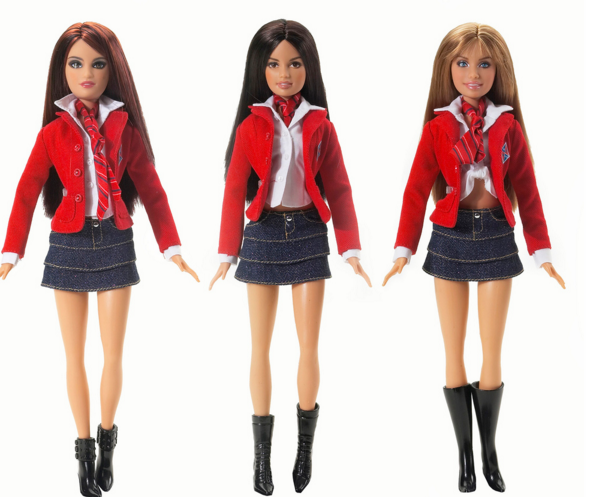New Barbies break barriers
Razor scooters, the board game of Life and Barbie dolls could probably have been found in almost everyone’s house growing up. While today scooters may be replaced by hoverboards and Life replaced by an iPad app, the Barbie has stayed pretty much the same. Until now.
On Thursday, Jan. 28, Mattel, the company behind Barbie, announced the release of three new Barbie types in the Fashionista collection: Tall, Petite and Curvy. There is also new hair and skin colors coming out, totaling 33 new dolls.
“The company creating more body types and skin colors for Barbie is showing young girls that there is more than one perception of beauty,” Emerson Kobak ’18, who has been researching Barbie for her U.S. Histroy class, said.
Many are excited about the change in body image that the new dolls could create. With the estimated real life height and weight of the original Barbie doll, her Body Mass Index (BMI) would be around 16.2 – the average BMI for women is between 18.5 and 24.9.
“Everything about her wouldn’t work on an actual woman,” Jenna Patterson ’16 said about the original Barbie doll. Patterson is a member of the club Reshaping Reality, which created a life size proportional Barbie a few years back. Patterson said that “You can see how unrealistic her body is. She wouldn’t be able to support herself.”
There were multiple factors involved in the drastic change to the Barbie line. “The reality is that Mattel most likely made this change because of complaints and loss of sales,” Kobak speculated. Barbie sales did go down over 20 percent from 2012 to 2015, with around $500 million having been lost in 2014.
A difference in beauty standards from the creation of the doll in 1959 to now has also played a part. “It’s the 21st century and it just doesn’t make sense to have only thin, tall, caucasian, blonde, blue-eyed barbies when many women do not look like that,” Patterson said. “[the new doll] eliminates some of the unrealistic standards set by the original doll.”
Twitter has taken to the news quickly, using the hashtag #TheDollEvolves. While many are praising the company, some call them out for not going far enough.
In a “Telegraph” interview, Tania Missad, an employee for Mattel brand said that they knew there would be people unhappy with the change. “Barbie is a lightning rod for conversation, and of course there will be a backlash,” Missad said.
Most of the dolls are available on Mattel’s online store only, with some coming out in stores on March 1 and others being released in stages throughout the year.

Trying to “make it” as Amelia Brown put it, takes a major effort in any area of your life. Whether it be in a sport like basketball, a career in jewelry...

















































